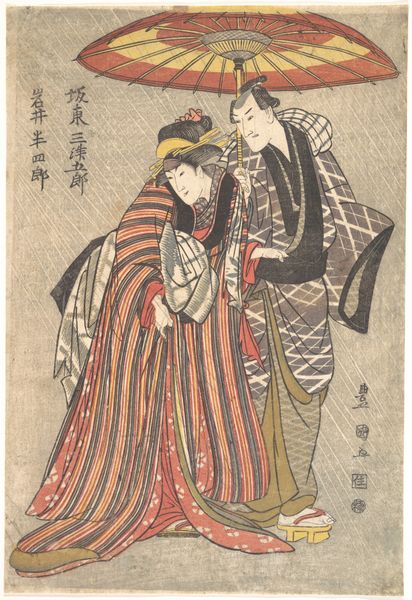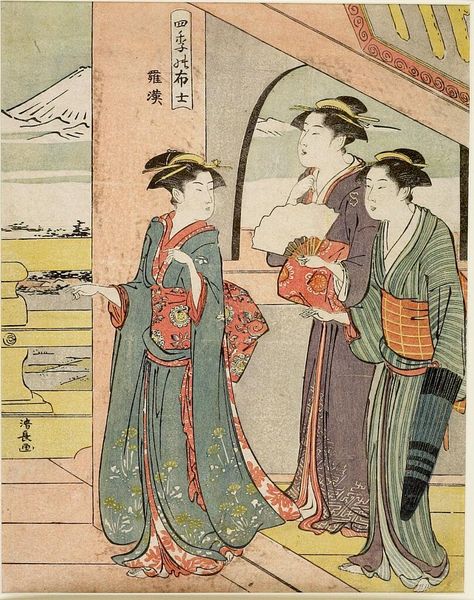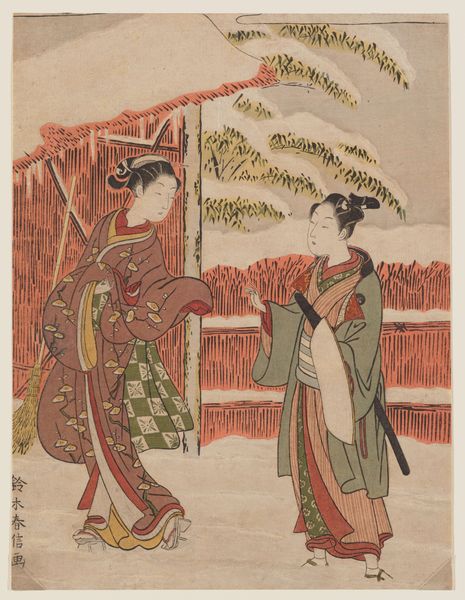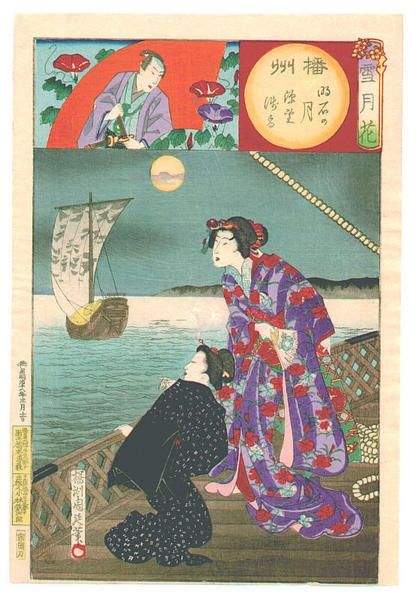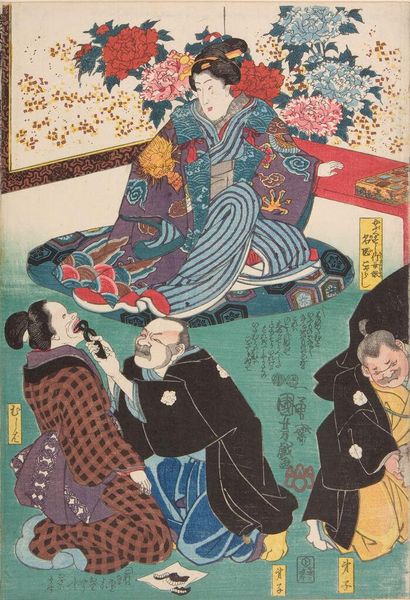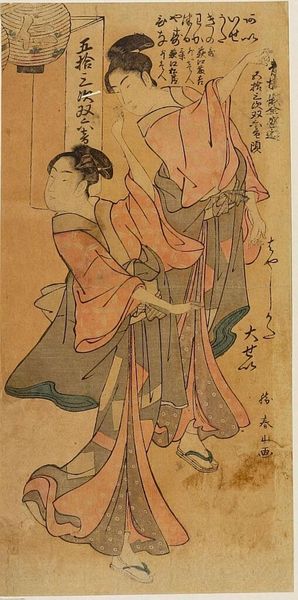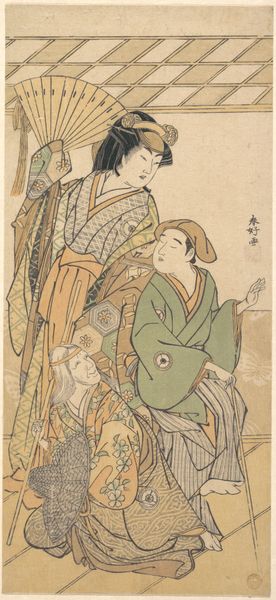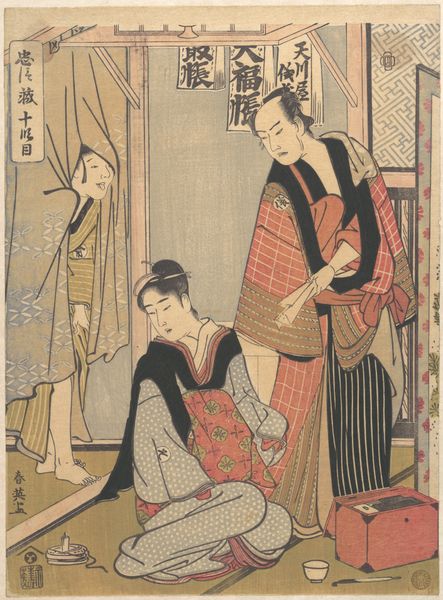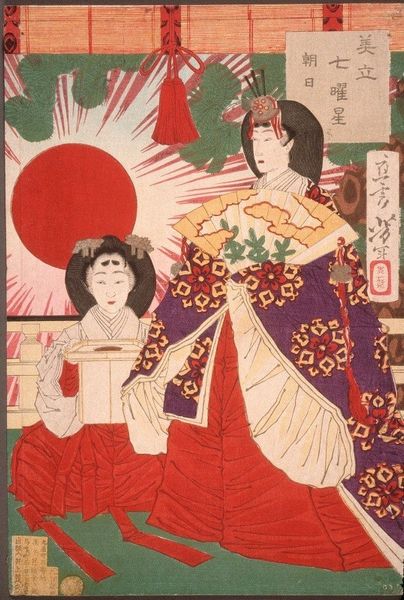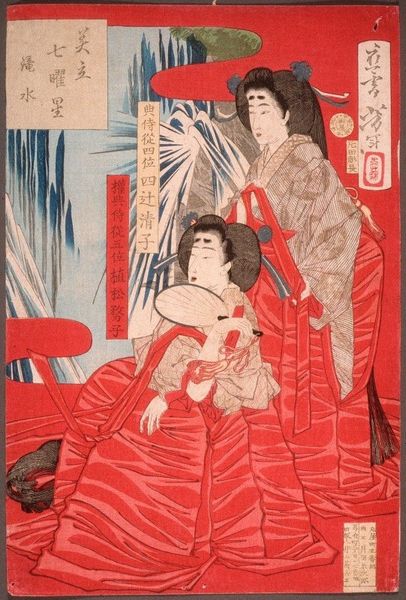
Copyright: Public Domain: Artvee
Curator: Yoshitoshi’s woodblock print, "Wood for the Plum Tree," created in 1878, presents a glimpse into the ephemeral beauty prized in ukiyo-e traditions. What strikes you about it initially? Editor: Well, I’m drawn to the vibrant red background. It's such a bold choice, dominating the image and emphasizing the figures. And the texture achieved with the woodblock seems integral to its charm, it feels very handmade and rich. Curator: That redness isn't merely decorative. Consider the plum blossoms themselves, laden with significance in Japanese art—representing resilience, renewal, and the anticipation of spring. They carry an almost defiant cheerfulness, budding against the stark winter. Editor: That's interesting. But I also wonder about the materials involved, what kind of wood, what inks were used, the craftsmanship required to achieve such fine lines, particularly in the women's robes. Ukiyo-e prints often involved collaborations, right? So how was the labor divided? Curator: Indeed! Yoshitoshi's role was the designer, but the process of carving and printing was often executed by skilled artisans. It highlights the social aspect of art creation. As for the women, their costumes offer insights too; notice the subtle gradations in the purple robe. How the garments frame the women also shows their specific position within Japanese society. The plum blossoms create a screen of wishes surrounding them. Editor: Thinking about production brings me to accessibility. These prints, produced in multiples, were a form of affordable art. It's a far cry from unique paintings valued as status symbols. This work shows art entering into and influencing broader patterns of life. Curator: A wonderful point! In examining this print, we're seeing echoes of culture, commerce, labor, artistry and individual spirit, all interacting and subtly shaping the image before us. It’s much more layered than it first appears. Editor: Precisely, and the history of the print as object adds so much. It's not just a static representation but also a marker of social exchange, skill and available resources that we continue to have access to over time.
Comments
No comments
Be the first to comment and join the conversation on the ultimate creative platform.
